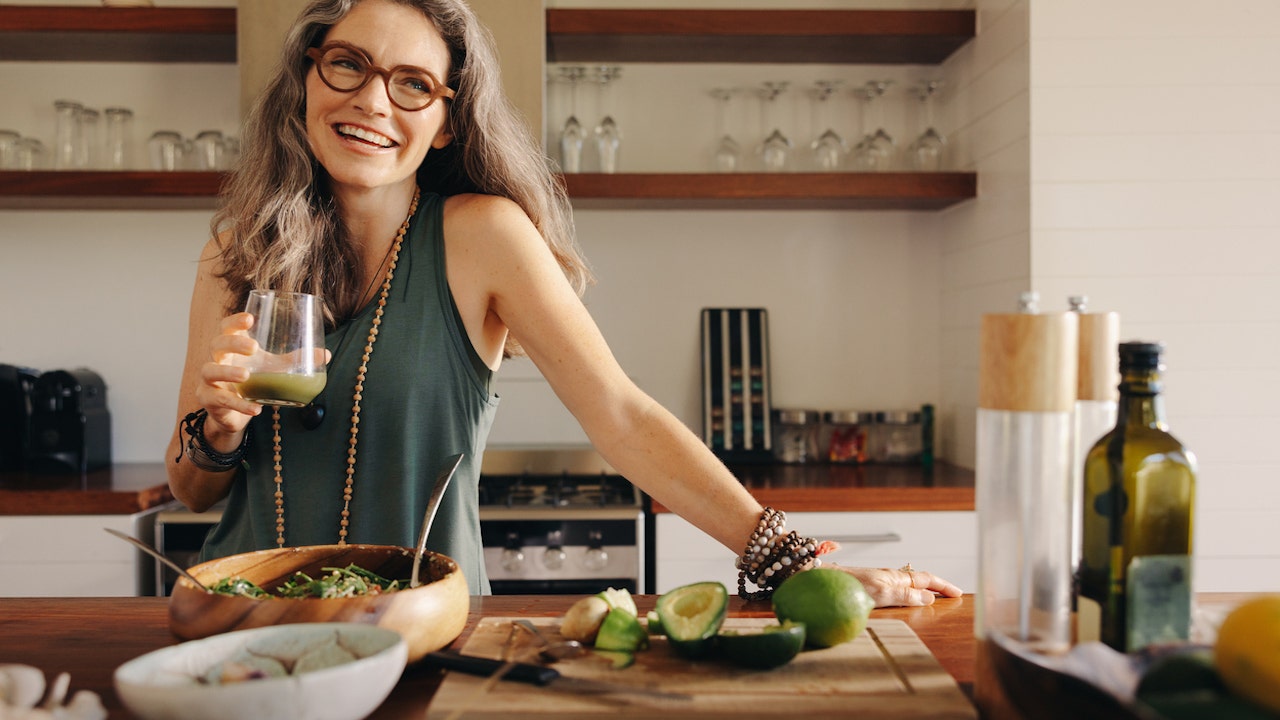Business
Remote work gave them a reprieve from racism. They don’t want to go back

As LeRon Barton weighed his options, he realized what he had to do.
If he took a pay cut of $5,000, he could have a fully remote tech job that would let him roam the country and give him the flexibility he craved. Or he could keep his salary and stay at his current job — a network engineer position based at a San Francisco hospital that required occasional site visits and kept him tethered to the region.
Patients at the hospital sometimes gave him funny looks when he came to check their room’s Wi-Fi, recalled Barton, who is Black, and staff members questioned his competence. Working remotely during the pandemic showed him a whole different lifestyle: no commute, more time with his family and a break from the onslaught of microaggressions and other racist behavior he’d had to endure.
Barton chose the pay cut.
“You’re totally out of the rigamarole,” said Barton, who is now a writer and technical project manager at a Southern California tech company. “And just the quality of life has improved drastically.”
It’s a sentiment expressed by many Black workers and other people of color who found that remote work lessened the racism they faced on the job.
But it forces workers to make a difficult choice — prioritize your mental health or endure for the sake of your career. Remote job opportunities are shrinking as more companies require that workers come back to the office. And even in hybrid workplaces, remote employees can be at a disadvantage for career advancement since managers sometimes forget about them or assume they are less productive than their in-person peers, a concept called proximity bias.
“Jobs are built on social capital. We could miss out on those happy hour opportunities,” Barton said. But he’s willing to sacrifice the in-office networking. “Honestly,” he said, “I would trade that in for my peace of mind.”
Throughout the pandemic, survey after survey showed what some workers of color have known for years: Workplace politics and discrimination can make the office an undesirable place to be.
In 2021, just 3% of Black white-collar “knowledge workers” wanted to return to full-time in-office work, compared with 21% of white ones, according to research from Future Forum, a project backed by instant messaging firm Slack. The research found that hybrid or remote work arrangements increased Black workers’ feelings of belonging at work and boosted their ability to manage stress.
Part of the push for remote work can be explained by the preferences of millennial and younger workers, who want the freedom to choose where they do their jobs, said LaTonya Wilkins, founder and chief executive of Change Coaches, a leadership development firm focused on workplace culture.
But how supervisors evaluate workers is also a factor.
Career coach Jermaine L. Murray said many of his clients, relatives and friends have expressed their reluctance to return to the office. Clients of all races have told him they prefer remote work, but his Black clients have more frequently emphasized that continuing to work from home allowed them to avoid office politics.
“It almost felt like the distance allowed for a more objective environment,” said Murray, founder of JupiterHR, which provides career development services.
With remote work, the data confirm whether workers are getting their jobs done, and there’s less room for co-workers to take undeserved credit since there are fewer opportunities to socialize on the job, he said. Clients whose companies are switching to hybrid work are looking for other jobs, Murray said. And because of the sluggish economy and cooling labor market, he said, they’re “quiet quitting” their current positions rather than leaving immediately.
Opportunities for remote-only jobs, however, are starting to shrink.
In April, about 11% of U.S. job postings on LinkedIn were for remote work, down from a peak of nearly 21% in March 2022, according to a May report from LinkedIn. Such jobs were in high demand: Nearly half of job applications via the website in April were for fully remote positions, and only one-third were for jobs without remote or hybrid options.
“Professionals that have the opportunity to be in these remote environments and not experience microaggressions at work or not do as much code-switching or all of those things have now said, ‘Oh, that was great for my mental health’ or, ‘It helped me be a little more authentic at work,’” said Andrew McCaskill, a career expert with LinkedIn. “And a lot of employees and workers just don’t want to give that up.”
For one 35-year-old paralegal from the Midwest, remote work is now a must.
“As a Black employee and someone who is neurodivergent, it’s just better for me,” said the paralegal, who asked that their name and gender not be published for fear of harming future employment opportunities. “I’m able to be more productive. I’m able to focus better. I get so much more work done here in my own space where I’m able to be who I am and think.”
Previous jobs often involved being the only Black worker in the office and being judged based on social interactions, the paralegal said.
If the paralegal was quiet and focused only on work, managers said to stop being antisocial and hard to approach. On bubbly or chatty days, the paralegal was admonished for not doing enough work. If the paralegal participated in a passionate conversation around the water cooler, criticism would soon follow: Don’t be so aggressive.
“There’s never really a happy medium,” the paralegal said. With remote work, however, those problems are eliminated, and the paralegal can focus solely on getting the job done.
Management experts argue that remote work opportunities have implications far beyond individual work experiences and affect corporate culture as a whole.
Eliminating remote options can also hurt companies’ ability to recruit a diverse workforce. With remote positions, companies can hire people living in geographic areas that are more diverse than the communities around their headquarters.
“Companies have to recognize that if they really want to meet their commitments to diversity and inclusion, one of the best levers they can pull for that is remote work,” said McCaskill of LinkedIn.
Employers considering a return-to-office mandate should make sure they are giving workers a reason to be in the office, which can make in-person work more purposeful and give fewer opportunities for microaggressions, said Wilkins, the Change Coaches CEO.
In a hybrid situation, managers need to make sure employees working remotely are not left out or inadvertently penalized by proximity bias, she said. Part of that could include creating opportunities for employees to get exposure and recognition for their work even if they are remote and destigmatizing mental health support, management experts said.
As senior director of talent strategy at UC Irvine, Kimberly D. Jones made sure to have candid conversations with employees about their concerns regarding a return to the office. One employee shared experiences with her that predated Jones’ arrival at the department and explained how those situations contributed to their anxiety about being at work.
Jones said she addressed the issue with the employee and the leadership team and now checks in with that employee regularly to make sure they feel comfortable at work. She also makes a point to walk through the work space and greet everyone in the morning, in part to get a sense of the office dynamics and in part to make herself available to any employees who might have concerns.
“You have a responsibility as a leader to create an environment where everyone feels welcome and can be successful,” Jones said.
Women of color especially face difficult situations at work.
Professor Joan C. Williams and her collaborators have built a database of more than 18,000 people as they research the intersection of racial and gender bias in white-collar professions. In almost every dataset she’s seen, women of color report the most bias and the least workplace fairness, she said.
Particularly telling is a survey question that asks respondents whether they have access to career-enhancing work. Nearly 90% of white men say yes; for women of color, that percentage sinks as low as 50%.
“No matter what industry they work, no matter what company … it’s unbelievably consistent,” said Williams, who is a professor at University of California College of the Law, San Francisco, and founding director of the university’s Center for WorkLife Law.
Structural engineer Rapunzel Amador-Lewis has gotten used to being one of very few women, much less women of color, at her workplaces.
She remembers being told by a well-meaning male mentor at her first job that as a female engineer, she’d have to “run 110 yards to score a touchdown.” After men at work sites called her “honey” and assumed she was there to deal with office matters rather than inspect their work, she started bringing along a male co-worker — and although that cut down on harassment, the men sometimes assumed her co-worker was the engineer, not her. Her confidence in her skills and abilities was misinterpreted as arrogance and documented as such in a performance review.
“I have never had a woman engineer to report directly to,” said Amador-Lewis, who immigrated to the San Francisco Bay Area from the Philippines as a child in 1985. “I’ve had peers, one or two peers every now and then, but I’ve never had a mentor, a female mentor, especially not a woman of color mentor.”
Eventually, Amador-Lewis started her own consulting firm and began working from home to better balance her personal and work lives. It took a lot of effort, but she relished being her own boss, she said. She later went back to corporate staff roles at engineering firms but said she left her last job over negotiations to add more remote days to her schedule and resistance to changes she wanted to make to the corporate culture, dynamics and inclusion in the workplace.
Would she ever go back to in-person work? She doesn’t love the idea.
“If I find enlightenment somewhere,” Amador-Lewis said with a laugh. She is currently taking a sabbatical and embarked on a 107-day cruise around the world with her husband while figuring out her next steps.
Maybe she’d accept a hybrid schedule, she said. After all, remote work allows her to take care of the chronic migraines she’s suffered since 2013 and helps her balance her caregiving responsibilities for her husband, who has had seizures. “I would never 100% do in-office again.”
Barton, the technical project manager, is also adamant about the benefit of remote work. Despite the shrinking pool of remote job opportunities and the possibility for remote positions to come with smaller salaries, he knows what’s most important to him.
“What do you value?” he said. “Do you value your sanctity or do you value the dollar?”

Business
Commentary: MAHA report's misrepresentations will harm public health and hit consumers' pocketbooks

Serious followers of healthcare policy in the U.S. didn’t expect much good to emerge from its takeover by Donald Trump and his secretary of Health and Human Services, the anti-vaccine activist Robert F. Kennedy Jr.
But the agency and its leadership managed to live down to the worst expectations May 27, when HHS released a 73-page “assessment” of the health of America’s children titled “The MAHA Report” (for “Make America Healthy Again”).
A sloppier, more disingenuous government report would be hard to imagine. Whatever credibility the report might have had as a product of a federal agency was shattered by its obvious errors, misrepresentations and outright fabrications of source materials, some of it plainly the product of the authors’ reliance on AI bots.
I, and my co-authors, did not write that paper.
— Epidemiologist Katherine Keyes says a citation to her work by the MAHA report was fabricated
At least seven sources cited in the report do not exist, as Emily Kennard and Margaret Manto of the journalism organization NOTUS uncovered. HHS hastily reissued the report with some of those citations removed, but without disclosing the changes — an extremely unkosher action in the research community.
“I, and my co-authors, did not write that paper,” epidemiologist Katherine M. Keyes of Columbia told me by email, referring to a citation to a purported paper about anxiety among American adolescents resulting from the COVID pandemic. “It does make me concerned given that citation practices are an important part of conducting and reporting rigorous science.”
Keyes said she has done research on the topic at hand: “I would be happy to send this information to the MAHA committee to correct the report, although I have not yet received information on where to reach them,” she said.
We’ll go deeper into the fabrication fiasco in a moment. What’s important is its context: concerted attacks by Kennedy and his associates on the fundamentals of public health in America.
Those attacks have profound implications not only for Americans’ health, but on pocketbook issues and the U.S. economy generally. HHS bowed toward the latter issue by asserting in the report that the health profile of American children poses “a threat to our nation’s health, economy, and military readiness.”
As it happens, the recent actions at HHS and its subagencies, the Food and Drug Administration and the Centers for Disease Control and Prevention, increase those threats.
Take the agencies’ May 20 decision to remove COVID boosters from the CDC’s list of recommended vaccinations for healthy children and pregnant women. The decision opens the door for insurance companies to start charging full price for the shots, rather than covering them without copays as the law requires for preventive services.
That could mean out-of-pocket charges of $100 or more each booster, which could itself discourage families from getting vaccinated. This is a reminder of how family economics affect health.
The original version of RFK Jr.’s MAHA report cited this paper by Katherine Keyes and associates about adolescents’ pandemic-era mental health. The paper doesn’t exist; the citation to the Journal of the American Medical Assn. goes to a page saying it can’t be found. However …
(HHS)
The MAHA report attributes the rise in childhood obesity and diabetes in part to ultraprocessed foods, or UPFs. But it’s silent on what experts call the “social determinants of disease,” which are heavily related to economics. The report doesn’t mention “food deserts,” mostly low-income neighborhoods in which “children do not have access to anything other than UPFs, … or the cost of fresh food vs. the hyperpalatable and cheap UPFs,” observed the Delaware Academy of Medicine in its gloss on the report.

… after the fabrication was exposed, Heath and Human Services reissued the report, removing the citation without explanation.
(HHS)
And although the report mentions that safety net programs such as the Supplemental Nutrition Assistance Program — SNAP, or food stamps, school lunch and breakfast programs, and the Special Supplemental Nutrition Program for Women, Infants, and Children, or WIC, could play a role in promoting healthy eating, it doesn’t mention that those programs face severe budget cuts from the Trump White House.
Last month, HHS canceled nearly $800 million in grants to the pharmaceutical company Moderna for the development of a human vaccine against bird flu, part of a Biden administration effort to prepare for possible future pandemics, the potential social and economic impact of which should be self-evident, given our experience with COVID. Bird flu already has devastated the dairy and poultry industries in many regions and sickened dozens of farmworkers.
There was some hope in the research community that sound science might still live at HHS because some HHS appointees had scientific or medical credentials that Kennedy lacked. Those hopes get dashed on a regular basis.
On Sunday, for instance, FDA Commissioner Marty Makary — a former professor of medicine at Johns Hopkins — was reduced to incoherence when CBS’ “Face the Nation” moderator Margaret Brennan reminded him that on May 20 he co-authored a report in the New England Journal of Medicine that identified pregnancy as factor increasing the risk of “severe COVID-19” — warranting that pregnant women get the vaccine.
“Yet seven days later,” Brennan said, Makary joined with Kennedy in a video announcement recommending against giving pregnant women the booster. “So what changed in the seven days?” Makary argued that only 12% of pregnant women got the shot last year, “so people have serious concerns.”
What he didn’t say was that those concerns have been ginned up by FDA critics — including Makary — and vaccine opponents, even though clinical trials involving tens of thousands of subjects have validated the recommendation that pregnant women get the vaccine.
That brings us back to the MAHA report.
Let’s start with its core assertion — that “today’s children are the sickest generation in American history.” As soon as the report was issued, this trope was picked up uncritically by the news media, before the report’s citation errors were discovered. But it’s undoubtedly wrong, the product of cherry-picking official statistics and ignoring what they really say.
An attack on childhood vaccination gets a subject heading all its own in this report, which asserts that the number of recommended vaccines for children by 1 year of age has increased from three in 1986 to 29 now, including vaccines for pregnant mothers.
Pediatrician Vincent Iannelli has ably punctured this claim, which he identifies as anti-vax “propaganda.”
The report reaches its count of 29 by including some vaccines given to children older than 1 year and double-counting shots such as the RSV vaccine, given to either the mother or the infant, not both. An honest count would be as few as 17, not all of which are injections. The report also counts combination vaccines such as MMR and TDaP as three shots rather than one.
In pushing the “sickest generation” trope, the report glides over the heath threats faced by children — and adults — before vaccines were available for specific diseases. In the U.S., measles cases averaged more than 530,000 per year throughout the 20th century; as of 2023, the average was 47, according to the CDC.
Mumps fell from more than 162,000 cases annually to 429 and rubella from nearly 48,000 to three. Whooping cough, or pertussis, fell from nearly 201,000 cases to 5,611. And polio, the fearsome nemesis of American families in the 1950s, from 16,300 to zero.
One can trace the “sickness” of children in bygone generations through child mortality statistics. In 1900, the average life expectancy of a 1-year-old in the U.S. was about 56 years; that bespeaks a morbid population of infants. In 1950 it was still only about 70. Now it’s 79.
For all that the MAHA report purports to identify the leading health threats to America’s kids — processed foods, environmental chemicals, vaccines — it totally ignores what we know to be the single biggest cause of childhood mortality in the U.S.: firearms.
The CDC has reported that in 2021, firearm injuries killed 2,571 children. That rate of 3.7 deaths per 100,000 children aged 17 and younger was an increase of 68% since 2000. The firearm death rate of 6.01 per 100,000 children aged 1-19 was 10 times the rate in Canada and 20 times the rates in France and Switzerland. Why the silence in the MAHA report? What does that say about how far you should trust the MAHA team at HHS?
As for the multiple false citations in the report, they point to the sheer irresponsibility of a federal agency’s outsourcing of research to AI.
I asked HHS for an explanation of how these errors got into the MAHA report, but I received no reply. White House spokeswoman Karoline Leavitt, however, responded to a reporter’s question about the fiasco by claiming there were “formatting issues” with the report.
Her excuse made me laugh, because it was the same excuse offered by the big law firm Latham and Watkins when it was caught submitting AI fabrications to a judge as part of a legal filing, as I reported recently. In neither case did the excuses explain how “formatting issues,” whatever that means, resulted in the fabrication of source citations.
HHS attributes the report to a 14-member “Make America Healthy Again” commission, composed mostly of cabinet members and other officials with no responsibility for or expertise in public health, such as the secretaries of Housing and Urban Development, Education, Agriculture and Veterans Affairs and directors of White House budget and economic offices. Makary and Bhattacharya are on the panel. They lent their names and reputations to this product, much to their discredit.
But it’s unclear about who actually put pen to paper. Some of its language can be traced back to Kennedy’s own words. The report’s assertion that “today’s children are the sickest generation in American history” was picked up and amplified by media coverage of the report’s release, even though it’s not supported by the facts. It is a verbatim echo of a claim Kennedy has made repeatedly, however, mostly as a plank in his anti-vaccination platform. It was part of the title of a book his anti-vaccine organization, Children’s Health Defense, issued in 2018 (“The Sickest Generation”).
The most frightening aspect of the MAHA report is that it’s likely to be the blueprint for a comprehensive attack on public health; scarier in that news media and political leaders are citing it as though it has scientific value. It’s so infected with falsehoods, misrepresentations and ideological blinkers that it will only subject the health of American children to the greatest risk they’ve faced in, yes, American history.
Business
Disney to cut hundreds of employees in latest round of layoffs

Walt Disney Co. launched another deep round of layoffs on Monday, notifying several hundred Disney employees in the U.S. and abroad that their jobs were being eliminated amid an increasingly difficult economic environment for traditional television.
People close to the Burbank entertainment giant confirmed the cuts, which are hitting film and television marketing teams, television publicity, casting and development as well as corporate financial operations.
The move comes just three months after the company axed 200 workers, including at ABC News in New York and Disney-owned entertainment networks. At the time, the division said it was trimming its staff by 6% amid shrinking TV ratings and revenue.
Disney declined to specify how many workers were losing their jobs. The cutbacks — the fourth round of layoffs in less than a year — come after Disney Chief Executive Bob Iger acknowledged to Wall Street that Disney had been pumping out too many shows and movies to compete against Netflix.
The programming buildup accelerated as the company prepared to launch Disney+ in late 2019, and it bulked up its staff to handle the more robust pipeline.
But the company has since retrenched, recognizing the need to focus on creating high-quality originals that meet Disney’s once lofty standards.
Disney has faced significant budget pressures after promising investors that its direct-to-consumer services — Disney+, Hulu and ESPN+ — would achieve profitability last year. The company lost billions of dollars over several years in its strategic shift to streaming, but it reached its goal to make money on streaming last fall.
Still, streaming subscribers can be fickle, creating a daunting new reality for the company that could long count on cable TV subscriptions as one of its most reliable economic pillars. Cord-cutting has taken a heavy toll.
The entertainment giant — one of Southern California’s largest private sector employers — has eliminated more than 7,000 jobs since 2023.
The traditional TV and film units felt the brunt of the downsizing during the last year. In July, the company slashed about 140 workers, primarily in its Disney entertainment unit. The company’s TV stations also lost staff members and ABC News shed about 40 employees last October.
ABC News largely escaped this week’s cuts, according to one knowledgeable person who was not authorized to discuss the internal moves.
ABC News still boasts healthy audiences for its newscasts, but the ABC television network and Disney-owned entertainment channels have seen dramatic viewer defections as consumers switch to streaming services, including Netflix, Paramount+ and Disney+.
ABC’s prime-time schedule has lost considerable steam. For the just-ended broadcast television season, ABC mustered only three shows in Nielsen’s top 20 rankings. “Monday Night Football on ABC” ranked seventh by averaging more than 10 million viewers, “Saturday Night Football” ranked 18th with 7.4 million viewers and freshman drama “High Potential” made the cut at 20th with an average audience of 7.1 million, according to Nielsen.
Monday’s eliminations come three weeks after Disney presented its fall lineup to advertisers, leaning heavily on its sports stars including Peyton and Eli Manning rather than actors from its entertainment programming.
ESPN was spared the ax as the sports unit is preparing for its high-stakes launch this fall of a stand-alone ESPN streaming service, the knowledgeable person said.
The move comes amid a strong run for Disney’s film studio, which has celebrated blockbuster box office results from its live-action “Lilo & Stitch,” which has earned $610 million in ticket sales globally, according to Box Office Mojo.
A month ago, Disney issued strong fiscal second-quarter earnings. The company reported $23.6 billion in revenue for the three months that ended March 29, a 7% increase compared with the same quarter a year earlier. Earnings before taxes totaled $3.1 billion, up $2.4 billion from last year.
Hollywood trade site Deadline first reported the news of the latest Disney cuts.
The landscape has been increasingly challenging for traditional companies. In addition to Disney, Warner Bros. Discovery, Paramount Global and even such tech companies as Amazon and Apple have fired workers.
In late May, NBCUniversal cut 54 jobs in Los Angeles, according to state employment records. Six Flags Entertainment Corp. laid off 140 workers.
Disney shares closed down 9 cents to $112.95.
Business
The Imports the U.S. Relies On Most From 140 Nations, From Albania to Zimbabwe

President Trump’s on-and-off tariffs have created deep uncertainty about the cost of imported goods — and it’s not always clear what goods will be most affected with any given country.
The largest U.S. imports from many countries are oil and gas, electronics, cars and pharmaceuticals. But there’s another way to look at what Americans import: trying to measure a country’s distinct contribution to the U.S.’s total needs.
For example, China’s largest exports to the U.S. — by dollar value — are electronics. But the U.S. also imports large quantities of electronics from elsewhere. Nearly 100 percent of imported baby carriages, however, come from China.
Switzerland, meanwhile, is responsible for nearly all of America’s imported precious metal watches. Ethiopia, on the other hand, sends the U.S. around 2 percent of its imported knit babies’ clothes — but that’s a larger share than for any other item it exports to the U.S.
The table below shows the item the U.S. relies on most from each of 140 trading partners. (We took out items that the U.S. also exports in large quantities, such as petroleum.)
What the U.S. is most reliant on from each country
| COUNTRY | ITEM | Pct. of U.S. imports from here |
|
|---|---|---|---|
| Canada | Live pigs | >99% | |
| Peru | Calcium phosphates | >99% | |
| South Africa | Chromium ore | 98% | |
| Switzerland | Precious metal watches | 98% | |
| China | Baby carriages | 97% | |
| Mexico | Self-propelled rail transport | 94% | |
| Portugal | Natural cork articles | 93% | |
| India | Synthetic reconstructed jewelry stones | 89% | |
| Italy | Vermouth | 86% | |
| Indonesia | Palm oil | 85% | |
| Madagascar | Vanilla | 80% | |
| Turkey | Retail artificial filament yarn | 79% | |
| Brazil | Semi-finished iron | 76% | |
| Vietnam | Coconuts, brazil nuts, and cashews | 75% | |
| Australia | Sheep and goat meat | 74% | |
| New Zealand | Misc. animal fats | 73% | |
| Gabon | Manganese ore | 71% | |
| Chile | Refined copper | 71% | |
| Netherlands | Bulbs and roots | 70% | |
| Spain | Olive oil | 62% | |
| Taiwan | Tapioca | 62% | |
| Argentina | Groundnut oil | 60% | |
| Colombia | Cut flowers | 60% | |
| Bolivia | Tungsten ore | 59% | |
| Dominican Republic | Rolled tobacco | 59% | |
| Cote d’Ivoire | Cocoa paste | 59% | |
| Germany | Felt machinery | 58% | |
| Finland | Cobalt oxides and hydroxides | 56% | |
| Japan | Pianos | 52% | |
| Israel | Phosphatic fertilizers | 50% | |
| Philippines | Coconut oil | 50% | |
| France | Insect resins | 50% | |
| Thailand | Sugar preserved foods | 47% | |
| Malaysia | Rubber apparel | 46% | |
| Ireland | Sulfonamides | 45% | |
| Pakistan | Light mixed woven cotton | 43% | |
| Singapore | Glass with edge workings | 39% | |
| Guatemala | Bananas | 38% | |
| Ecuador | Cocoa beans | 38% | |
| South Korea | Rubber inner tubes | 33% | |
| Jamaica | Aluminum ore | 33% | |
| Bangladesh | Non-knit babies’ garments | 31% | |
| Austria | Handguns | 29% | |
| United Kingdom | Antiques | 28% | |
| Cambodia | Gum coated textile fabric | 25% | |
| Nicaragua | Rolled tobacco | 24% | |
| Guyana | Aluminum ore | 24% | |
| Ukraine | Seed oils | 24% | |
| Belgium | Flax woven fabric | 22% | |
| Bahrain | Stranded aluminum wire | 22% | |
| Sri Lanka | Coconut and other vegetable fibers | 21% | |
| Morocco | Barium sulphate | 20% | |
| Romania | Steel ingots | 19% | |
| Norway | Carbides | 19% | |
| Sweden | Stainless steel ingots | 17% | |
| Costa Rica | Bananas | 16% | |
| Honduras | Molasses | 16% | |
| Paraguay | Wood charcoal | 16% | |
| Denmark | Casein | 15% | |
| Tunisia | Pure olive oil | 15% | |
| Russia | Phosphatic fertilizers | 15% | |
| Fiji | Water | 15% | |
| Hong Kong | Pearls | 13% | |
| Nepal | Knotted carpets | 13% | |
| Poland | Processed mushrooms | 12% | |
| Lebanon | Phosphatic fertilizers | 12% | |
| Croatia | Handguns | 12% | |
| Bulgaria | Non-retail combed wool yarn | 12% | |
| Laos | Barium sulphate | 12% | |
| Mozambique | Titanium ore | 11% | |
| Ghana | Cocoa beans | 11% | |
| Bahamas | Gravel and crushed stone | 10% | |
| Greece | Dried, salted, smoked or brined fish | 10% | |
| Jordan | Knit men’s coats | 10% | |
| Czech Republic | Rolling machines | 10% | |
| El Salvador | Molasses | 10% | |
| Egypt | Spice seeds | 10% | |
| United Arab Emirates | Raw aluminum | 9% | |
| Uganda | Vanilla | 9% | |
| Nigeria | Raw lead | 9% | |
| Uruguay | Bovine, sheep, and goat fat | 9% | |
| Latvia | Book-binding machines | 9% | |
| Kazakhstan | Ironmaking alloys | 8% | |
| Cameroon | Cocoa paste | 8% | |
| Lithuania | Wheat gluten | 8% | |
| Oman | Metal office supplies | 8% | |
| Hungary | Seed oils | 7% | |
| Belize | Molasses | 7% | |
| Faroe Islands | Non-fillet fresh fish | 6% | |
| Qatar | Pearls | 6% | |
| Myanmar | Misc. knit clothing accessories | 5% | |
| Zambia | Precious stones | 5% | |
| Slovenia | Packaged medications | 5% | |
| Senegal | Titanium ore | 5% | |
| Algeria | Cement | 4% | |
| Haiti | Knit T-shirts | 4% | |
| Kenya | Titanium ore | 4% | |
| Liechtenstein | Iron nails | 4% | |
| Georgia | Ironmaking alloys | 4% | |
| Liberia | Rubber | 4% | |
| Serbia | Rubber inner tubes | 4% | |
| Iceland | Fish fillets | 4% | |
| Democratic Republic of the Congo | Refined copper | 3% | |
| Botswana | Diamonds | 3% | |
| Chad | Insect resins | 3% | |
| Zimbabwe | Leather further prepared after tanning or crusting | 3% | |
| Luxembourg | Polyamide fabric | 3% | |
| Panama | Non-fillet fresh fish | 3% | |
| Albania | Ironmaking alloys | 3% | |
| Estonia | Fishing and hunting equipment | 2% | |
| Ethiopia | Knit babies’ garments | 2% | |
| Namibia | Wood charcoal | 2% | |
| Venezuela | Processed crustaceans | 2% | |
| Slovakia | Rubber tires | 2% | |
| Lesotho | Knit men’s shirts | 2% | |
| Tanzania | Precious stones | 2% | |
| Papua New Guinea | Vanilla | 1% | |
| Mauritius | Processed fish | 1% | |
| Saudi Arabia | Iron nails | 1% | |
| Moldova | Wine | ||
| Suriname | Non-fillet fresh fish | ||
| Angola | Pig iron | ||
| Armenia | Diamonds | ||
| Trinidad and Tobago | Non-fillet fresh fish | ||
| Macau | Knitted hats | ||
| North Macedonia | Curbstones | ||
| Togo | Fake hair | ||
| Bosnia and Herzegovina | Non-knit women’s coats | ||
| Republic of the Congo | Antiques | ||
| Azerbaijan | Ironmaking alloys | ||
| Iraq | Antiques | ||
| Libya | Misc. vegetable products | ||
| Cyprus | Olive oil | ||
| Kuwait | Ironmaking alloys | ||
| Malta | Air conditioners | ||
| British Virgin Islands | Diamonds | ||
| Brunei | Knit T-shirts | ||
| Cayman Islands | Phones | ||
| Equatorial Guinea | Knitted hats | ||
| Sint Maarten | Hard liquor |
Curious where the U.S. imports a particular item from? You can look it up below.
Searchable table
| Computers $138.5 billion in imports | ||
| Mexico | 35% | |
| China | 26% | |
| Taiwan | 19% | |
| Vietnam | 11% | |
| Thailand | 5% | |
| Phones $119 billion | ||
| China | 42% | |
| Vietnam | 17% | |
| Mexico | 9% | |
| India | 7% | |
| Thailand | 7% | |
| Packaged medications $100.4 billion | ||
| Ireland | 16% | |
| Switzerland | 12% | |
| India | 12% | |
| Italy | 7% | |
| China | 6% | |
About the data
We analyzed U.S. International Trade Commission data on goods imported for consumption in 2024. We used product descriptions from the Observatory of Economic Complexity to label the goods, and edited these descriptions lightly.
We grouped goods using the first four digits of their code in the Harmonized Tariff Schedule, which lists categories of products.
We excluded goods that are widely produced in the U.S., using export data to remove goods where the U.S. exports at least 25 percent of what it imports by value.
We included only trading partners that export at least $50 million of goods each year to the U.S.
-

 Movie Reviews1 week ago
Movie Reviews1 week agoMOVIE REVIEW – Mission: Impossible 8 has Tom Cruise facing his final reckoning
-

 Maryland1 week ago
Maryland1 week agoMaryland, Cornell to face off in NCAA men’s lacrosse championship game
-

 Tennessee1 week ago
Tennessee1 week agoTennessee ace Karlyn Pickens breaks her own record for fastest softball pitch ever thrown
-

 News1 week ago
News1 week agoHarvard has $52,000,000: Trump mounts attack, backs foreign student enrolment ban
-

 Utah1 week ago
Utah1 week agoUtah Republicans ignore study supporting gender-affirming care for trans youth. It's research they demanded
-

 Politics1 week ago
Politics1 week agoTrump admin asking federal agencies to cancel remaining Harvard contracts
-

 South-Carolina1 week ago
South-Carolina1 week agoSouth Carolina infant rescued from filthy home infested with animals, some dead
-

 News1 week ago
News1 week agoVideo: The Counties Where Trump Made Gains














